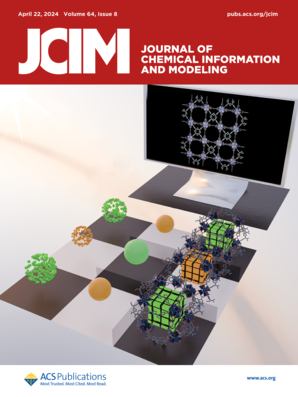Boosting Drug-Disease Association Prediction for Drug Repositioning via Dual-Feature Extraction and Cross-Dual-Domain Decoding.
IF 5.6
2区 化学
Q1 CHEMISTRY, MEDICINAL
引用次数: 0
Abstract
The extraction of biomedical data has significant academic and practical value in contemporary biomedical sciences. In recent years, drug repositioning, a cost-effective strategy for drug development by discovering new indications for approved drugs, has gained increasing attention. However, many existing drug repositioning methods focus on mining information from adjacent nodes in biomedical networks without considering the potential inter-relationships between the feature spaces of drugs and diseases. This can lead to inaccurate encoding, resulting in biased mined drug-disease association information. To address this limitation, we propose a new model called Dual-Feature Drug Repurposing Neural Network (DFDRNN). DFDRNN allows the mining of two features (similarity and association) from the drug-disease biomedical networks to encode drugs and diseases. A self-attention mechanism is utilized to extract neighbor feature information. It incorporates two dual-feature extraction modules: the single-domain dual-feature extraction (SDDFE) module for extracting features within a single domain (drugs or diseases) and the cross-domain dual-feature extraction (CDDFE) module for extracting features across domains. By utilizing these modules, we ensure more appropriate encoding of drugs and diseases. A cross-dual-domain decoder is also designed to predict drug-disease associations in both domains. Our proposed DFDRNN model outperforms six state-of-the-art methods on four benchmark data sets, achieving an average AUROC of 0.946 and an average AUPR of 0.597. Case studies on three diseases show that the proposed DFDRNN model can be applied in real-world scenarios, demonstrating its significant potential in drug repositioning.基于双特征提取和跨双域解码的药物重新定位药物-疾病关联预测。
生物医学数据的提取在当代生物医学科学中具有重要的学术和实用价值。近年来,通过为已批准的药物发现新的适应症而进行药物重新定位的一种具有成本效益的药物开发策略越来越受到关注。然而,许多现有的药物重新定位方法侧重于从生物医学网络的相邻节点中挖掘信息,而没有考虑药物与疾病特征空间之间潜在的相互关系。这可能导致不准确的编码,导致有偏见的药物-疾病关联信息。为了解决这一限制,我们提出了一种新的模型,称为双特征药物再利用神经网络(DFDRNN)。DFDRNN允许从药物-疾病生物医学网络中挖掘两个特征(相似性和关联)来编码药物和疾病。利用自关注机制提取相邻特征信息。它包含两个双特征提取模块:用于提取单一领域(药物或疾病)特征的单域双特征提取(SDDFE)模块和用于提取跨领域特征的跨域双特征提取(CDDFE)模块。通过使用这些模块,我们可以确保更合适的药物和疾病编码。还设计了一个跨双域解码器来预测两个域的药物-疾病关联。我们提出的DFDRNN模型在四个基准数据集上优于六种最先进的方法,平均AUROC为0.946,平均AUPR为0.597。对三种疾病的案例研究表明,所提出的DFDRNN模型可以应用于现实场景,显示了其在药物重新定位方面的巨大潜力。
本文章由计算机程序翻译,如有差异,请以英文原文为准。
求助全文
约1分钟内获得全文
求助全文
来源期刊
CiteScore
9.80
自引率
10.70%
发文量
529
审稿时长
1.4 months
期刊介绍:
The Journal of Chemical Information and Modeling publishes papers reporting new methodology and/or important applications in the fields of chemical informatics and molecular modeling. Specific topics include the representation and computer-based searching of chemical databases, molecular modeling, computer-aided molecular design of new materials, catalysts, or ligands, development of new computational methods or efficient algorithms for chemical software, and biopharmaceutical chemistry including analyses of biological activity and other issues related to drug discovery.
Astute chemists, computer scientists, and information specialists look to this monthly’s insightful research studies, programming innovations, and software reviews to keep current with advances in this integral, multidisciplinary field.
As a subscriber you’ll stay abreast of database search systems, use of graph theory in chemical problems, substructure search systems, pattern recognition and clustering, analysis of chemical and physical data, molecular modeling, graphics and natural language interfaces, bibliometric and citation analysis, and synthesis design and reactions databases.

 求助内容:
求助内容: 应助结果提醒方式:
应助结果提醒方式:


